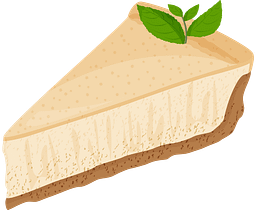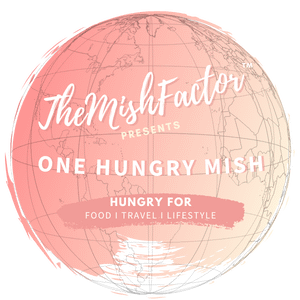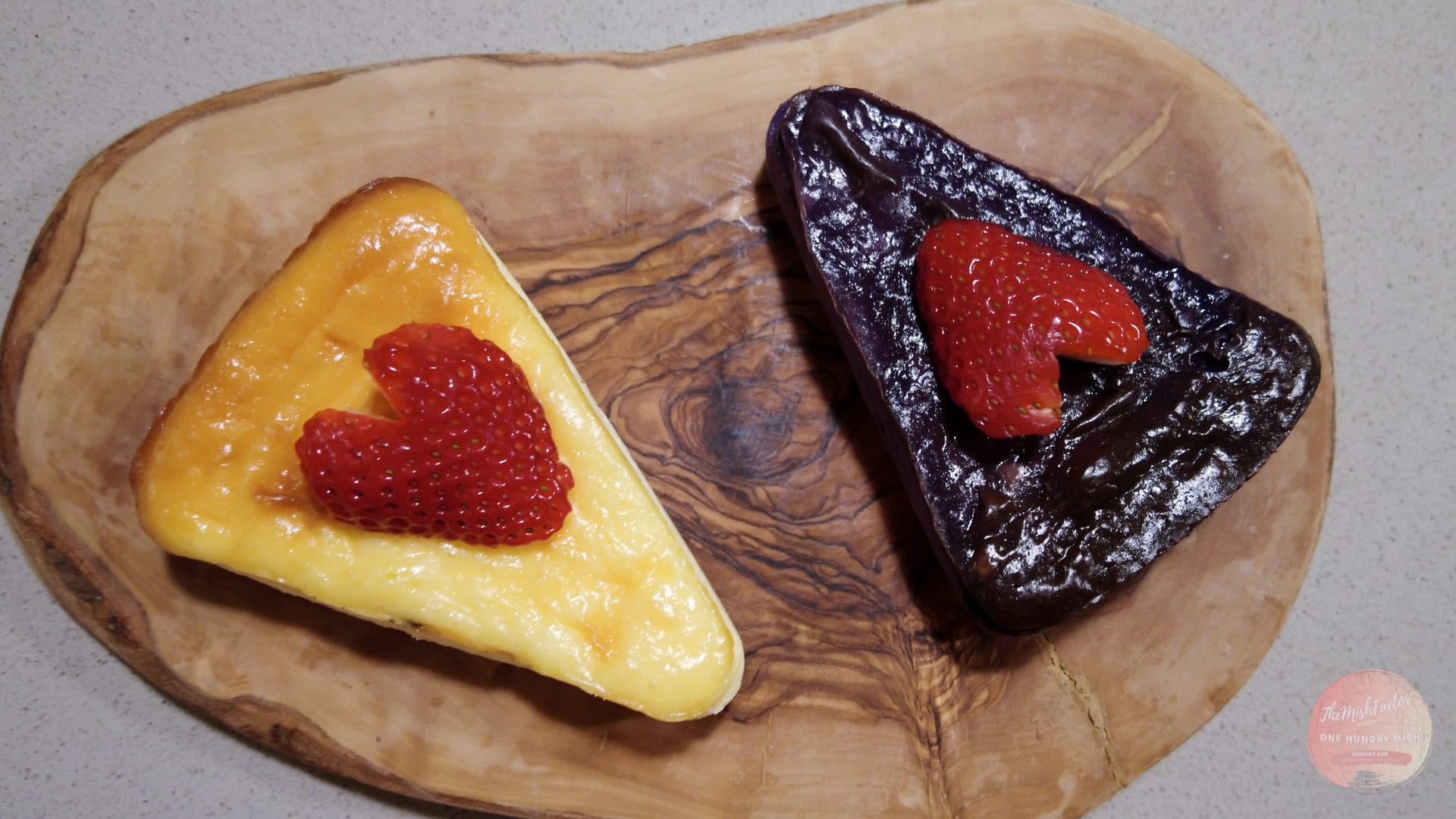I told myself for years I wouldn’t write about cheesecake. I’m not traumatized, I’m a former employee of one of America’s (at the time) largest cream cheese producers. Which means I know too much. Not enough to get me in trouble (after all I was not a developer and I cook for fun), but enough that I can quell any illusion of cheesecake being a hard dessert to make. Originally cheesecake came to be much like aspic of days past–food that’s easy to make but stunning in delivery. So let’s dash those fears and build that confidence!
Expert Secrets/Tips Below
New York Style Cheesecake Recipe Below
Homemade Crust Below

Cheesecake’s Powerhouse Ingredient–Cream Cheese
Sometimes I catch myself calling this cream cheese cake. Because depending on the ratios of ingredients, it’s primarily that. Which is great. Why? Few people realize that cream cheese is the champion of milky sweetness and that slight tang undertone (classically known as dairy sour) all while giving cheesecake it’s famous indulgent feel. Fewer people realize too that certain leading brands like Philadelphia cream cheese aren’t named that because they started in Philadelphia–it’s because at the time Philadelphia was synonymous with high quality or fancy things. And it was actually invented in New York! So much like how some people throw buzz words to get attention, the originator of Philadelphia Cream Cheese also wanted to get a hook for people to clamor to a cream cheese whose quality would speak for itself.
However Philadelphia Cheesecake indicates a style that does not use heavy cream or sour cream. Essentially, it covets an unfiltered texture of cream cheese, there’s nothing helping it become lighter and fluffy to the level of Japanese cheesecake which uses beaten egg whites to lift the cake, but it’s still lighter than it’s relative, New York style cheesecake. I personally still subscribe to the New York Cheesecake when it comes to American style cheesecakes which adds heavy cream or sour cream to help create a uniform, denser texture in the cheese cake.
Is Graham Cracker Crust the Only Way to be Classic?
So this answer will be novel to many. Cheesecake is older than graham crackers–which means there was a time when graham cracker crusts weren’t a thing! As the catalyst for me writing about cheesecake is a mixture of an old nagging thought that demystifying food is something a good foodie should do and for a cheesecake lover’s birthday, I needed to pull all the curtains back. Long story short–if someone claims a cheesecake with a chocolate crust or other crust isn’t traditional, remind them graham crackers have been around since the the 1820s, cheese cake is touted to be as ancient as Grecian empires.
Which brings me to what was alluded to in the earlier section–cheese cake is an internationally loved dessert with many forms. It makes sense after all, if it claims a creation point that is thousands of years ago, among trade, travel, and ingenuity we’ve had our hand at making our own versions synchronically.
What Makes This Recipe Special?
As mentioned, I was never a formulator, I was never a dairy scientist (these are real careers folks! People literally come in and make food reality and they tend to be the coolest humans I’ve ever met), but I was a pretty darn well trained food taster. Back when I was an intern, I started off in a cheese and dairy department in the age of Disneyesque food culture.
This meant I cut my teeth on calling out what makes certain hard and soft cheeses the perfect block/brick/etc. I was blessed enough to continue being a formal guinea pig post college and work with folks who spent months making sure cream cheese tastes and performs as it should no matter how “back to the olden days” it was pushed for. That meant learning a lot from the actual experts. That’s why this is sensational recipe–because it’s never failed to disappear with friends and family, and never failed to yield high praise. So let’s share some of these “expert secrets”.

Expert Cheesecake Secrets
Brick Cream Cheese is a must. Tubs are fine for bagels. Bricks are for baking/cooking use. Additionally full fat is important as it allows rise and set of the filling in this particular recipe.
Room temperature ingredients allow for easy ingredient integration (and allots fluffy cream cheese faster).
Leave 1 cm or 1/4 to1/2 an inch gap between the top of the cake tin/mold. The cake will expand in the oven. However it will deflate as it cools. This means if the goal is a tall cake, use a deep tin/mold.
For “I can’t believe this is homemade” consistent texture, allow resting time (at least 5 minutes) and tap the tin/mold to allow trapped air bubbles to escape.
Having a pan with water in the lower rack isn’t just to feel fancy. It allows rise and cooking in a less aggressive form, preventing cracks in the finished cake. Similar but not quite like a bain marie or water bath.
If adding in flavors or purees, blend into the heavy cream or half & half, allows for even flavor distribution. Half & half yields a less dense cake.
If using a silicone mold, it is suggested (not an expert tip but helpful) to wait until cake is fully cooled or even frozen before removing.

Cheesecake (New York Style) Recipe
Ingredients
- 1 lb (2 bricks) full fat Cream Cheese
- 1/2 cup Sugar
- 3 Eggs
- 3g or 1/2 tsp Salt
- 1 cup Heavy Cream OR Half & Half*
- 1 tsp Vanilla OR Flavoring (ex. matcha/instant coffee powder, ube, etc.)
- Crust
Steps
- Preheat oven at 325°F/160°C. Make sure there is a lower rack and upper rack.
- Whip the bricks of cream cheese until fluffy in bowl or stand mixer.
- Add sugar until creamed.
- Add eggs and salt, mix until integrated.
- If adding additional flavors, blend with heavy whipping cream or half & half.
- Combine all ingredients in bowl/stand mixer.
- Pour into crust. Wait 5 minutes and tap. Feel free to poke at stubborn air bubbles with a clean tooth pick or knife.
- Place a large baking pan full of water in lower rack. Bake at 325F for 25-90 minutes (bigger cake means longer time–individual molds are closer to 25 minutes, traditional cake sizes will be around 70 minutes–you’ll know it’s set when you can jiggle the cheesecake and its more a soft jiggle than a gelatin like jiggle). When opening post bake open with caution. Steam can come out.
- Cool (or freeze if in a silicone mold) and enjoy!
So I can’t take credit for this super simple but effective “make your own crust” ratio. I’m so bad at remembering I had to ask a friend who is truly the gourmand of the group. Frankly it’s much like my cheesecake recipe, writing it down saves time because while we’d eventually get here…who has time for that? Bonus is the gentle reminder on how to veganize the crust if needed.
Homemade Graham/Cookie Crust Recipe
Ingredients
- 10-15 graham crackers or cookie of choice (ex. chocolate cookies with a vanilla crème)
- 45g or 3 tbsp melted butter (dairy or vegan)
- 70g or 1/3 cup sugar of choice (can skip if using cookies)
- 1 pinch salt
Steps
- Preheat oven at 400°F/200°C.
- Crumble and mix ingredients together (can use a blender or food processor if desired for a more consistent texture).
- Press into desired container (pie tin or silicone molds).
- Bake for 10-12 minutes (may need additional time for larger sized crusts).

XOXO
Mish ❤
Looking for other Sweet Bakes?
- Wonderful Scones (Master Recipe)
- Filipino Bibingka aka Traditional Mochi Cake (Trader Joe’s Mochi Cake Hack)
- Brown Butter Miso Chocolate Chip Cookies (Jazzing Up A Classic Cookie on a Budget)

